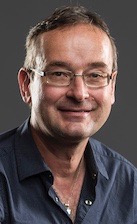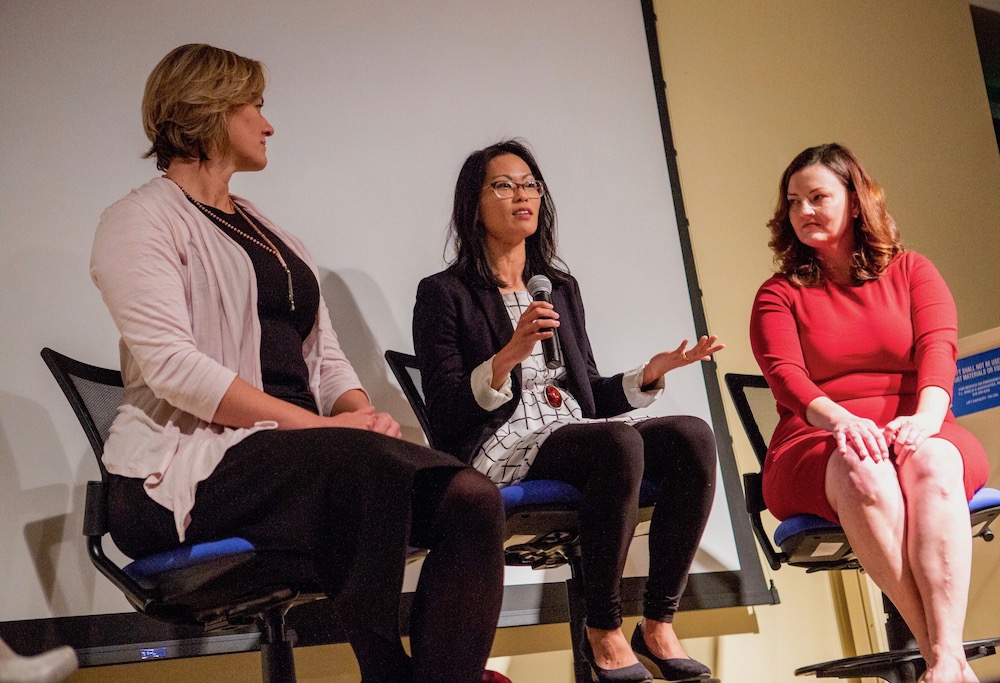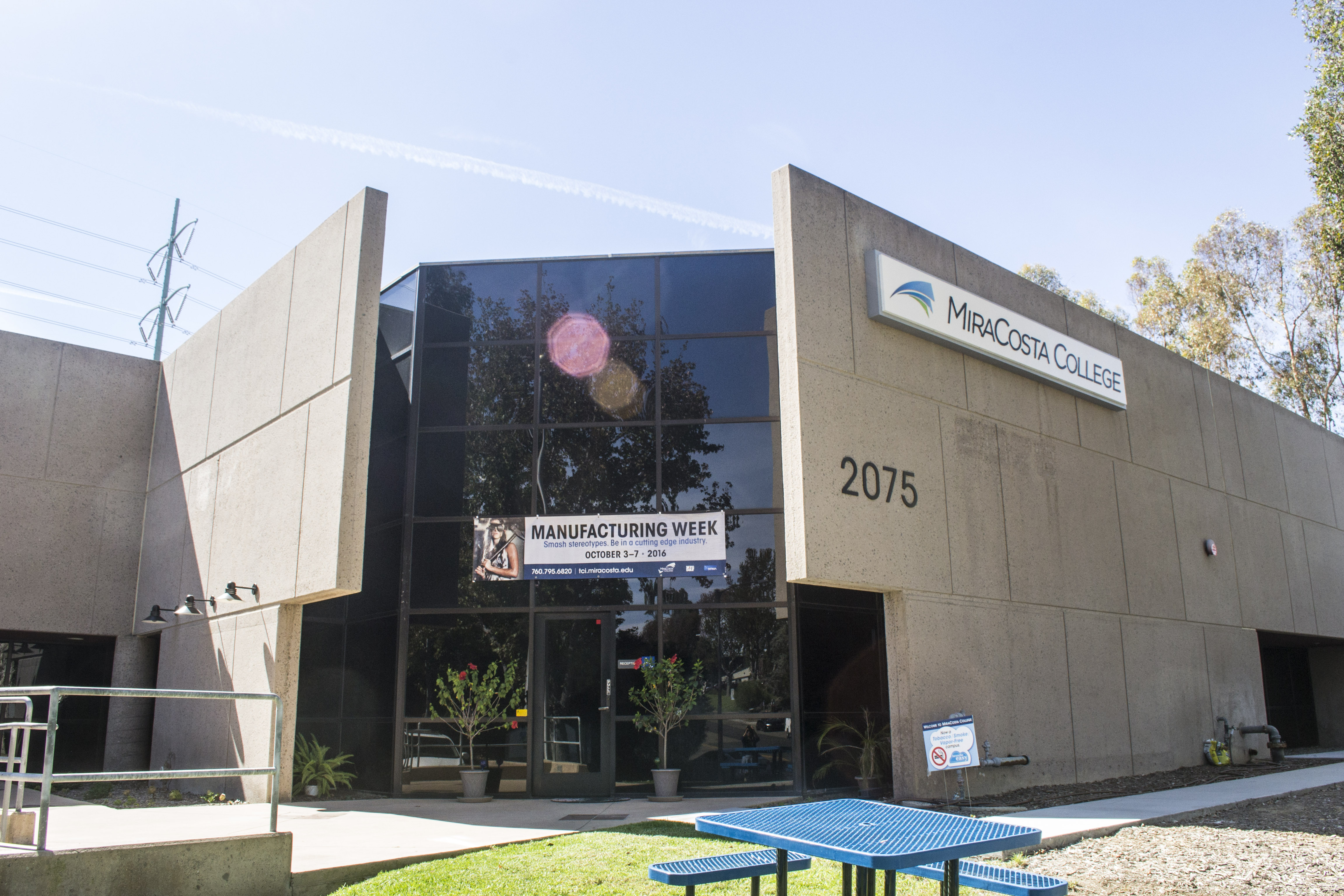Daily Business Report-Jan. 2, 2019
Life science startup founders Julie Collens, Debbie Chen and Kate Dilligan, from left, took the stage on Dec. 6 as new graduates of Ad Astra, a 12-week research-based accelerator focused on women.
Female founders of 3 San Diego life science
startups graduate from Ad Astra accelerator
The founders of three San Diego-area life science startups — Cooler Heads, Hydrostasis and Vivid Genomics — took the stage on Dec. 6 as new graduates of Ad Astra, a research-based accelerator for women.
To mark the occasion, the startup founders — Debbie K. Chen of Hydrostasis, Julie Collens of Vivid Genomics and Kate Dilligan of Cooler Heads — presented their business pitches to an audience of more than 150 prospective investors, partners, friends and family in the AMN Healthcare auditorium in San Diego. The founders, who each received a $20,000 investment from Ad Astra, are the second cohort of graduates from Ad Astra, which was founded by Vidya Dinamani, Allison Long Pettine, and Dr. Silvia Mah.
“Over the past 12 weeks, these determined founders worked through our rigorous program to establish a strong business foundation and gain the tools necessary to succeed as a leader,” says Dinamani. “They’ve been partnered with mentors through one-on-one sessions, have conducted investor simulations, and have connected with advisers to strengthen their companies. Now they’re ready to thrive in their own unique ways.”
The new graduates:
Debbie K. Chen of Hydrostasis: A former imaging/data scientist at Sanford Burnham Prebys Medical Discovery Institute, Chen is developing a personalized hydration monitor for athletes to reach and maintain peak performance. The company’s initial product is aimed at providing professional coaches with unparalleled accuracy and giving athletes an edge with their performance, while increasing athlete safety, recovery and longevity.
Julie Collens of Vivid Genomics: Bringing her experience in genomics, molecular diagnostics and life science tools, Collens founded Vivid Genomics, a company developing non-invasive tools to identify underlying neurodegenerative disease pathologies, drug response, progression rate and tools to facilitate on-target enrollment for clinical trials, thus improving the probability of getting to a successful drug for Alzheimer’s disease.
Kate Dilligan of Cooler Heads: A graduate of Stanford University, Dilligan was the former vice president of a neural technology innovation company. As the founder of Cooler Heads, she’s transforming the experience of cancer patients by providing empathetically designed products that address the special needs of cancer patients.
Ad Astra, which translates “to the stars” in Latin, was founded earlier this year to give women real-world experience with expert investors and entrepreneur mentors.
___________________
SDX to present workshop
on ‘Courageous Branding’
SDX, formerly the San Diego Advertising Club, will present “Courageous Branding,” a workshop presented by Ryan Berman, founder of Courageous, a consulting and coaching organization, from 8 a.m. to noon, Friday, Jan. 18, at National University’s Sanford Education Center, 11355 North Torrey Pines Road, La Jolla. Admission is $99 per person for members and $129 per person for nonmembers.
Berman, a former co-founder and chief creative officer at creative agency i.d.e.a. of San Diego, now heads a consultancy that trains companies on how to operationalize courage. Berman said his SDX workshop will help attendees get their personal brand in order. His Courage Brand method helps people discover what their brand is all about. SDX said the workshop is for leaders, marketers, entrepreneurs, influencers or anyone looking to build and position their personal self. Admission to the workshop will include a copy of Berman’s book, “Return on Courage: A Business Playbook for Courageous Change.” The presentation is part of SDX’s ongoing workshop series. For more information, visit SDX at www.sandiegox.org.
Prior to moving to San Diego in 2004, Berman spent seven years working in New York City at MVBMS/Euro RSCG (now Havas), which included working on such clients as Evian, Schering Plough, Subway, Universal Studios and Volvo. In San Diego, he formed Fishtank, an agency that later became i.d.e.a. in 2012.
___________________
La Jolla Institute professor named
world’s top expert in Type 1 Diabetes

Dr. Matthias von Herrath, who founded the Type 1 Diabetes Center at La Jolla Institute for Immunology, has been identified as the world’s top expert in Type 1 Diabetes by Expertscape, an organization that provides tools to quickly and easily find the best clinicians or pioneering scientists specializing in a wide range of medical conditions or biomedical topics.
Rankings by Expertscape use an objective algorithm to assign a weighted score to peer-reviewed scientific publications over the last ten years to identify the most knowledgeable and experienced physicians, clinicians and researchers across more than 26,000 specific topics.
Dr. von Herrath splits his time between his lab at La Jolla Institute and Novo Nordisk,a global pharmaceutical company best known for its diabetes products, where he recently assumed the position of Vice President and Senior Medical Officer. Dr. von Herrath’s position allows him to realize his dream of playing a key role in clinical trials on potential type 1 diabetes treatments, while continuing to lead his word-renowned research program at La Jolla Institute.
___________________

Commentary:
California sees slower population growth
By Dan Walters | CALmatters Columnist
The U.S. Census Bureau and the state Department of Finance issue annual population estimates each December and they don’t always agree on how many human beings occupy California.
During the previous decade, following the 2000 census, their estimates were as much as one million persons apart – largely because of different calculations of state-to-state migration.
Since 2010, however, they have been fairly well in synch and last month, they were very close.

The Census Bureau estimated California’s population, as of July 1, at 39.6 million, while the Department of Finance tabbed it at 39.8 million.
Both sets of numbers underscored, however, one of California’s most important demographic trends – the slowing of the state’s once-soaring population growth rate.
Waves of immigration and two baby booms pushed the state’s post-World War II population growth rapidly upward.
It tapered off during the 1970s as the first baby boom ebbed, but picked up strongly in the 1980s and 1990s, thanks to surges of immigration, legal and otherwise, from other nations and a second baby boom.
During the 1980s, California’s population increased by one-fourth, from about 24 million to 30 million, for example. But growth began to slow in the late 1990s and has been decelerating ever since.
Immigration has slowed to a trickle, and California now loses more people to other states than it gains.
Birthrates have declined sharply and as the first baby boom generation ages, the state’s death rate is increasing.
Annual growth rates are dropping, from 0.9 percent in 2010-11 to just 0.4 percent in 2017-18, according to the Census Bureau.
Since the 2010 census, which found 37.3 million Californians, the state has added just 2.3 million people, the Census Bureau data confirm, for an overall growth of 6.1 percent. That’s virtually identical to the nation’s, 5.96 percent, and puts California in some danger of losing one of its 53 congressional seats, which will be redistributed after the 2020 census.
“If the next census does a poor job of reaching traditionally hard-to-count populations and immigrant communities, more than 1.6 million Californians could be missed and the state could easily lose a seat,” the Public Policy Institute of California says in a recent report. “This scenario assumes a generally inaccurate count, similar to the 1990 Census, and a 10 percent undercount among households with one or more undocumented immigrants.
“Undercounting traditionally hard-to-count populations and immigrant communities could affect how political districts are redrawn within the state, shifting representation away from poorer areas with larger communities of color and toward wealthier and less racially and ethnically diverse parts of the state.”
The Trump administration has proposed adding a citizenship question to the 2020 census, and also appears to be cutting back on outreach to the hard-to-count populations cited in the PPIC report.
In response, California is challenging the citizenship question in court and will spend millions of dollars to encourage census participation.
However, even a vigorous and accurate census will not change demographic trends. Even if California doesn’t lose a congressional seat, the fact of slowing population growth remains – and it will have myriad effects beyond reapportionment, some good and some not so good.
It will, for instance, slightly ease the state’s housing crisis and the demand for public services. But it also will mean stagnation in the number of taxpaying workers and customers for goods and services and, when coupled with the aging factor, make it more difficult for employers to fill jobs.
Demography, it’s been said, is destiny – as California will demonstrate.
CALmatters is a public interest journalism venture committed to explaining how California’s state Capitol works and why it matters. For more stories by Dan Walters, go to calmatters.org/commentary.




